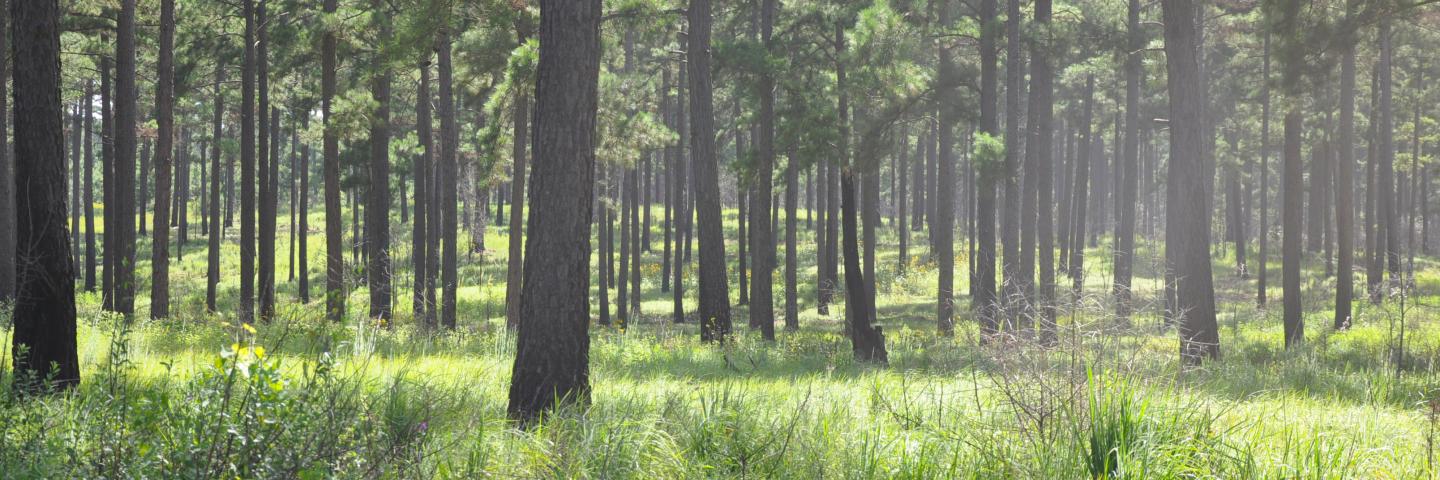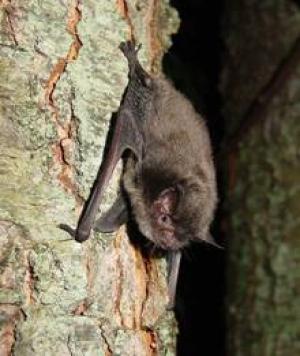Notice


The Healthy Forests Reserve Program (HFRP) is a voluntary program to assist landowners in restoring, enhancing, and protecting forestland resources on private lands through permanent easements, 30-year easements, and 10-year cost-share agreements.
The program objectives are to promote the recovery of threatened and endangered species under the Endangered Species Act; improve plant and animal biodiversity; and enhance carbon sequestration.
In Pennsylvania, HFRP funding will be utilized to protect and improve critical habitat for the Indiana bat (Myotis sodalis), through the acquisition of conservation easements and/or cost share agreements supported with habitat improvement through the implementation of selected conservation practices and supporting activities.
The Indiana Bat – Federally Protected Endangered Species

The Indiana bat, Myotis sodalis, is small (about 3 to 3.5 inches in length) and is grayish brown in color similar to the much more common little brown bat (Myotis lucifugus). In winter, Indiana bats hibernate in caves and abandoned mines, where winter temperatures are cooler – at lower temperatures, the bats’ metabolisms slow down, so they use less of their fat reserves as they hibernate. In the summer, the bats frequent wooded areas near streams, roosting in crevices under tree bark or in hollow trees. Trees that receive direct sunlight during the day are preferred by these bats.
At the south of their range, which runs from the eastern seaboard west to Oklahoma, Indiana bats eat mostly terrestrial insects including beetles and lepidoptera (moths and butterflies). In the north of their range, and nearer the Great Lakes, Indiana bats eat aquatic species, such as caddis flies.
The Indiana bat is vulnerable to human disturbance of its roosting sites. Contamination of their food supply through the use of pesticides in agricultural areas and loss of summer habitat may also be contributing to the species' decline. Although more research is needed to understand the summer habitat requirements of the Indiana bat, it is known that they roost under the bark of mature trees or dead snags in forests. Increase of old growth forest acreage and forest contiguity, especially within several miles of hibernation sites, will likely improve prospects for this species.
Indiana bat populations have declined approximately 60 percent since monitoring began in the 1960s. Currently, the species is protected under the US Endangered Species Act.
(Photo and Information courtesy of the USFWS)
Who is Eligible to Apply?
Owners of private forest land are eligible to enroll in the Healthy Forests Reserve Program in Pennsylvania. The land must be capable of supporting Indiana bat habitat, and must be located in a county where known Indiana bat hibernacula and maternity colonies exist (see the Application Information section below for a listing of applicable counties).
Easement applicants must be able to convey clear title to the land. In addition, the landowner must provide the following documentation so NRCS can determine if the landowner is eligible to participate in the program:
1) Copy of deed or other documentation showing that the landowner has title to the land.
Application Information
NOTE: PA NRCS is not currently accepting applications for HFRP in the following Pennsylvania counties where known Indiana bat hibernacula and maternity colonies exist:
If you are interested in the HFRP program, contact your local County NRCS field office to apply, or click on the application link below under forms to print and complete an application to submit to your local County NRCS field office.
Funding
HFRP contracts are awarded to applicants with the highest rankings until funds are exhausted.
Permanent easements:
• Landowners will receive 100% of the easement value of enrolled land
• Landowners will receive 100% of the average cost for approved HFRP practices
30-Year easements:
• Landowners will receive 75% of the easement value of enrolled land
• Landowners will receive 75% of the average cost for approved HFRP practices
10-Year restoration agreements:
• Landowners will receive 50% of the average cost for approved HFRP practices
Easement value will be determined by completing an appraisal for easement property.
HFRP practices were developed by NRCS in cooperation with the PA NRCS HFRP partners. The following is a list of some HFRP practices:
• Early Successional Habitat Management
• Riparian Forest Buffer
• Tree/Shrub Establishment
• Restoration of Rare and Declining Habitats
• Forest Stand Improvement
• Use Exclusion
Ranking Criteria
The HFRP ranking criteria for Pennsylvania was developed in consultation with the State Technical Committee and Federal, State and local wildlife agencies and organizations. The HFRP ranking includes criteria on proximity to bat hibernacula, size and fragmentation of offered acres, connectivity, proximity to riparian areas, biodiversity, invasive species, and availability of snags. Applications are evaluated and awarded points utilizing the ranking criteria.
Forms and Information
Forms
General Information
HFRP Manual (Follow the link to Electronic Directives System home page. From the navigation on the left select Manuals, then select Title 440 - Programs, then scroll down and select Part 511 - Healthy Forests Reserve Program.)
NRCS National HFRP website
U.S. Fish and Wildlife Service
Pennsylvania Department of Conservation and Natural Resources (DCNR)
Bureau of Forestry
Pennsylvania Game Commission (PGC)
The Nature Conservancy (TNC)
Program Contact:
Melissa Hanner
Easement Program Manager
(717) 237-2155
Ready to get started?
Contact your local service center to start your application.
How to Get Assistance
Do you farm or ranch and want to make improvements to the land that you own or lease?
Natural Resources Conservation Service offers technical and financial assistance to help farmers, ranchers and forest landowners.

To get started with NRCS, we recommend you stop by your local NRCS field office. We’ll discuss your vision for your land.
NRCS provides landowners with free technical assistance, or advice, for their land. Common technical assistance includes: resource assessment, practice design and resource monitoring. Your conservation planner will help you determine if financial assistance is right for you.
We’ll walk you through the application process. To get started on applying for financial assistance, we’ll work with you:
- To fill out an AD 1026, which ensures a conservation plan is in place before lands with highly erodible soils are farmed. It also ensures that identified wetland areas are protected.
- To meet other eligibility certifications.
Once complete, we’ll work with you on the application, or CPA 1200.
Applications for most programs are accepted on a continuous basis, but they’re considered for funding in different ranking periods. Be sure to ask your local NRCS district conservationist about the deadline for the ranking period to ensure you turn in your application in time.
As part of the application process, we’ll check to see if you are eligible. To do this, you’ll need to bring:
- An official tax ID (Social Security number or an employer ID)
- A property deed or lease agreement to show you have control of the property; and
- A farm number.
If you don’t have a farm number, you can get one from USDA’s Farm Service Agency. Typically, the local FSA office is located in the same building as the local NRCS office. You only need a farm number if you’re interested in financial assistance.
NRCS will take a look at the applications and rank them according to local resource concerns, the amount of conservation benefits the work will provide and the needs of applicants. View Application Ranking Dates by State.
If you’re selected, you can choose whether to sign the contract for the work to be done.
Once you sign the contract, you’ll be provided standards and specifications for completing the practice or practices, and then you will have a specified amount of time to implement. Once the work is implemented and inspected, you’ll be paid the rate of compensation for the work if it meets NRCS standards and specifications.

